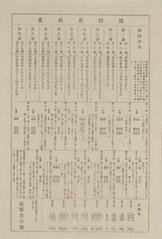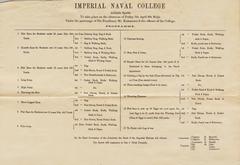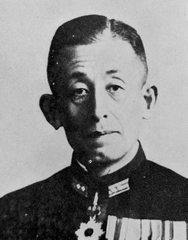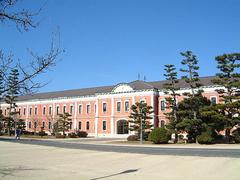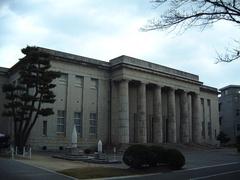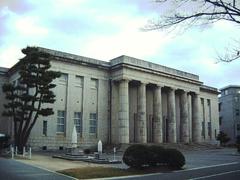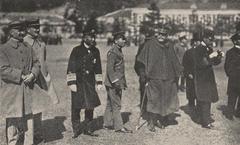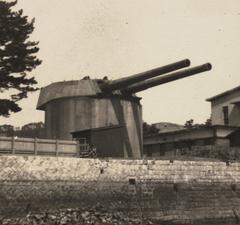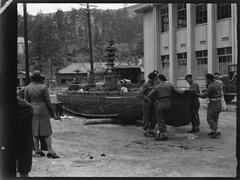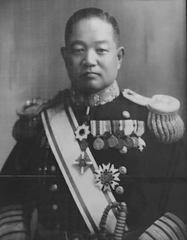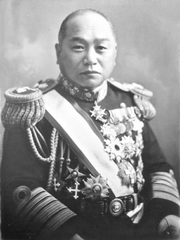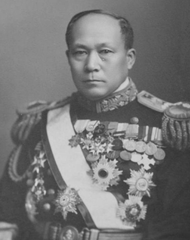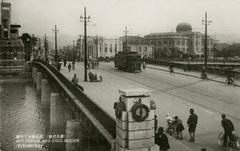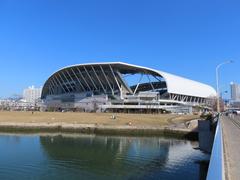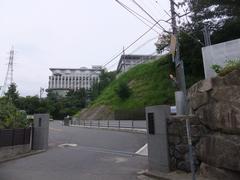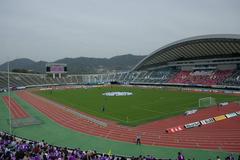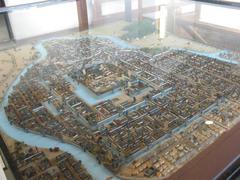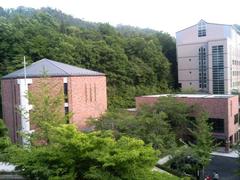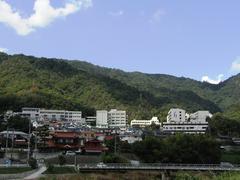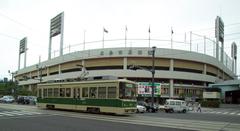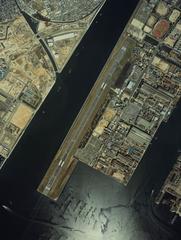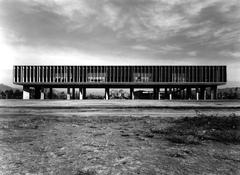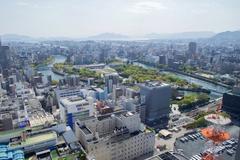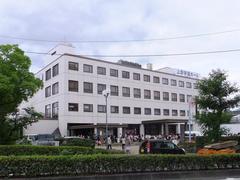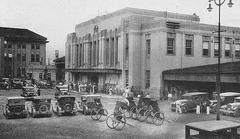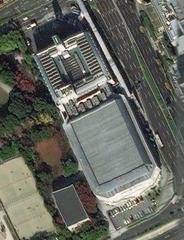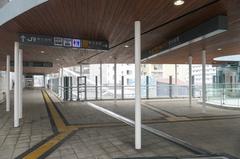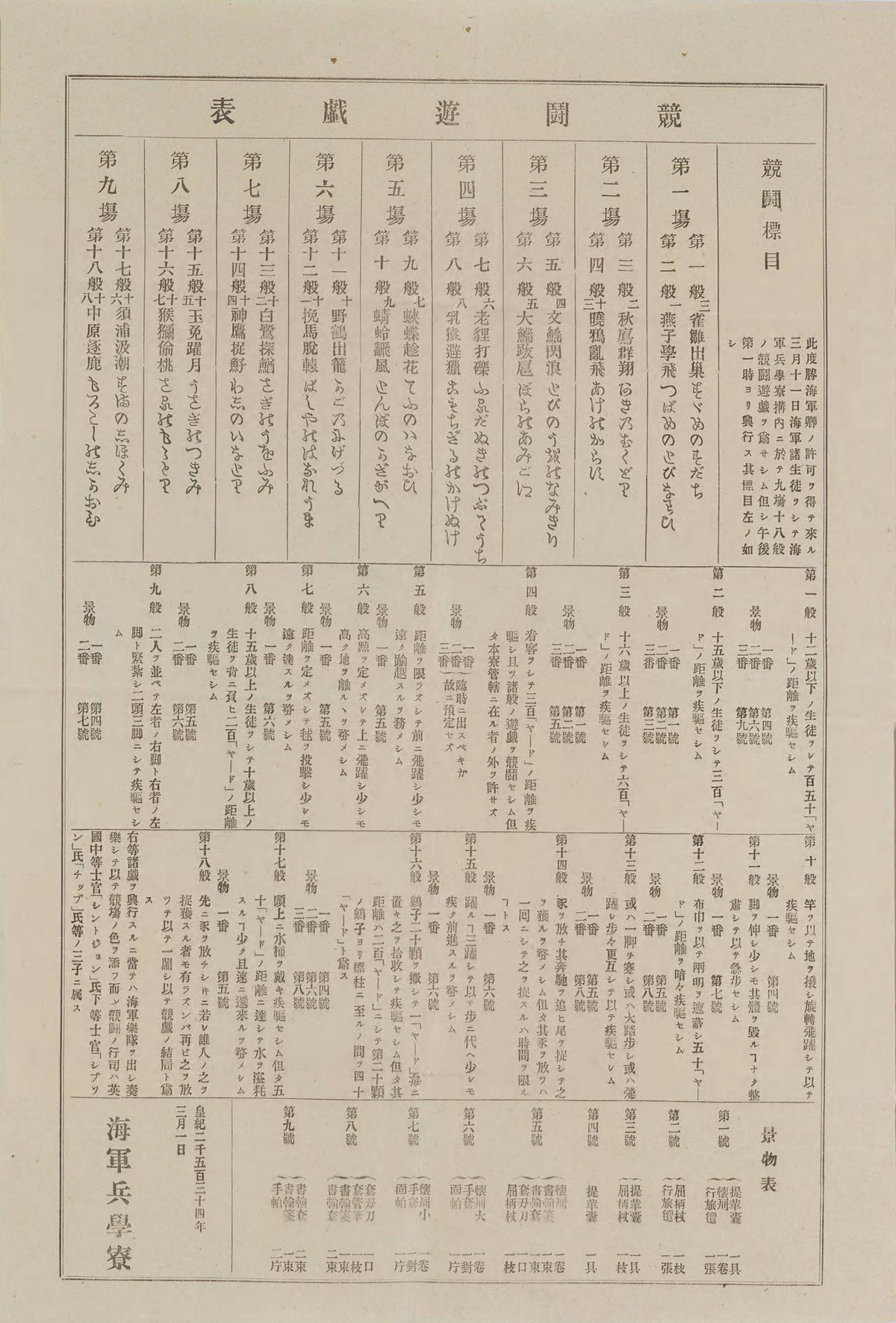
Imperial Japanese Naval Academy Hiroshima: Visiting Hours, Tickets & Historical Site Guide
Date: 14/06/2025
Introduction
Nestled on Etajima Island in Hiroshima Prefecture, the Imperial Japanese Naval Academy stands as one of Japan’s most significant historical and cultural sites. Established during the Meiji Restoration and relocated to Etajima in 1888, the Academy played a pivotal role in Japan’s modernization and emergence as a naval power. Today, the preserved red-brick campus and the Museum of Naval History offer a unique window into Japan’s maritime legacy, leadership traditions, and the evolution of its military education. Visitors can explore original academy buildings, view thousands of rare artifacts, and experience the tranquil setting of Etajima Island—a destination rich in both natural beauty and historical resonance (USNI Proceedings, Etajima City Official Website, Setonaikai Kisen Ferry Timetable).
This comprehensive guide provides detailed information on the Academy’s history, visiting hours, ticketing, tours, accessibility, and travel tips, as well as highlights of Etajima Island’s attractions.
Historical Overview and Significance
Origins and Development
The Imperial Japanese Naval Academy (海軍兵学校, Kaigun Heigakkō) was founded to spearhead Japan’s naval modernization. Its roots trace back to Nagasaki and subsequent relocations to Yokohama and Tokyo, before arriving at Etajima in 1888 (Wikipedia, USNI Proceedings). The move was strategic, aligning the Academy with the nearby Kure naval base and distancing it from direct foreign and political influence.
The Academy’s educational approach was shaped by the British Royal Navy, with a British mission of 34 officers overseeing curriculum and discipline. This marked a shift from traditional samurai leadership to a merit-based system, admitting cadets from diverse backgrounds.
Architectural and Educational Heritage
The campus is distinguished by its Meiji-era red-brick buildings, notably the Officer Candidate School (1893) and the Ceremonial Hall (1917), which combine British architectural influence with Japanese aesthetics (USNI Naval History Magazine, Springer). The Academy’s curriculum emphasized discipline, group cohesion (the buntai system), foreign languages (including English, French, Russian, and German), and leadership development.
Generations of notable naval officers trained here, including Admiral Heihachiro Togo (victor at Tsushima) and Admiral Isoroku Yamamoto (architect of Pearl Harbor) (USNI Naval History Magazine, Springer). The Academy’s legacy is reflected in its alumni’s influence on maritime strategy and Pacific history.
Visitor Information
Opening Hours and Admission
- Museum and Academy Grounds: Open Tuesday–Sunday, 9:00 AM–5:00 PM (last admission 4:30 PM; closed Mondays and national holidays).
- Admission Fees: Adults 700 JPY, students 400 JPY, children under 12 free. Group discounts available (Etajima City Official Website).
Access and Transportation
- By Ferry: Board a ferry from Kure Port (approx. 25–30 minutes; check the Setonaikai Kisen Ferry Timetable). Shuttle buses or taxis connect Etajima Port to the Academy.
- By Car: Accessible via the Hayase Ōhashi Bridge. Parking is available near the museum.
- Local Transit: Public transportation is limited; walking or cycling is recommended for exploring the island.
Accessibility
The museum and primary campus areas are wheelchair accessible, with ramps and elevators. Some historic buildings may have limited access due to preservation requirements. Visitors with mobility concerns should contact the museum in advance.
Campus Experience and Museum Highlights
Guided Tours
- Languages: Japanese (standard); English tours by advance reservation. English pamphlets and audio guides are available.
- Duration: 60–90 minutes, covering ceremonial grounds, memorials, classrooms, and the Naval History Museum (JMSDF 1st Service School).
- Photography: Permitted outdoors; restricted in some indoor areas.
Noteworthy Exhibits
- Over 10,000 artifacts, including uniforms, navigation tools, ship models, and personal items of key alumni.
- Memorial Hall honoring graduates who served and sacrificed.
- Special exhibits on the battleship Yamato, Admiral Togo, Admiral Yamamoto, and the “special attack” (tokkōtai) units, including kamikaze and kaiten operators (Kamikaze Images).
- Interactive displays and personal diaries that offer insight into academy life and wartime experiences.
Facilities
- Gift Shop: Souvenirs, books, and replica memorabilia.
- Café: Local seafood dishes and refreshments.
- Restrooms and Vending Machines: Available on site.
Visiting Tips and Practical Advice
- ID Required: All visitors must present valid photo identification (passport for foreign nationals) at the security gate.
- Dress Code: Modest clothing is recommended.
- Language: Most signage is in Japanese; consider using a translation app or arranging a guide.
- Best Time to Visit: Spring (cherry blossoms) and autumn (mild weather).
- Security: Follow all staff instructions and stay with your group during tours.
- Reservations: Strongly recommended for tours, especially in English or for groups.
Special Events and Nearby Attractions
- Ceremonial Events: Public entrance and graduation ceremonies in April and March.
- Local Cuisine: Sample Hiroshima-style okonomiyaki in Kure or kaigun-gozen (naval meal) at nearby Satsuki-so (lifestyle.inquirer.net).
- Other Attractions: Kure Maritime Museum (Yamato Museum), JMSDF Kure Museum, and hiking or cycling routes on Etajima (dive-hiroshima.com).
- Accommodation: Range of inns and hotels on Etajima Island (allabout-japan.com), with many offering sea views and local hospitality.
Etajima Island: Natural Setting and Cultural Heritage
Etajima Island, the fourth largest in the Seto Inland Sea, is renowned for its mild climate, scenic coastline, olive groves, and outdoor activities. Olive cultivation, hiking, cycling, and water sports are increasingly popular, and the island’s welcoming community adds to its charm (allabout-japan.com, joyinhiroshima.com).
The island’s history is deeply rooted in its naval legacy, but also features cultural innovations like olive oil production and agritourism, alongside peaceful beaches and panoramic sea views.
Frequently Asked Questions (FAQ)
Q: Are English-language tours available?
A: English tours are occasionally offered by advance reservation; otherwise, Japanese tours are standard. English pamphlets and audio guides are available.
Q: How do I get to the Academy?
A: Take a ferry from Kure Port (about 25–30 minutes). Shuttle buses or taxis connect Etajima Port to the Academy (Setonaikai Kisen Ferry Timetable).
Q: Can I take photos inside the museum?
A: Photography is allowed outdoors and in some indoor areas, but restricted in others. Please follow posted guidelines.
Q: Is the site accessible for those with disabilities?
A: The main museum and campus areas are wheelchair accessible. Some historic buildings may have limited access.
Q: Are there other attractions nearby?
A: Yes—explore Kure Maritime Museum, JMSDF Kure Museum, hiking trails, beaches, and sake breweries on Etajima.
Summary and Recommendations
A visit to the Imperial Japanese Naval Academy on Etajima Island offers a profound look into Japan’s naval history and architectural heritage, set against the serene backdrop of the Seto Inland Sea. The preserved campus and Museum of Naval History provide immersive guided tours, rare artifacts, and personal narratives that illuminate the Academy’s pivotal role in shaping Japan’s maritime identity.
To maximize your visit:
- Reserve tickets and tours in advance (especially for English support).
- Check ferry schedules and access routes ahead of time.
- Download the Audiala app for interactive maps, audio guides, and the latest visitor information.
- Plan for a day trip or longer stay to enjoy Etajima’s natural beauty, local cuisine, and nearby historical sites.
Whether you are a history buff, military enthusiast, or curious traveler, the Imperial Japanese Naval Academy is an essential destination for experiencing the intersection of tradition, education, and Japan’s ongoing commitment to peace and maritime excellence (USNI Naval History Magazine, Kamikaze Images, Etajima City Official Website).
Sources and Further Reading
- Visiting the Imperial Japanese Naval Academy at Etajima: History, Tickets, and Travel Tips, 2023, US Naval Institute Proceedings (https://www.usni.org/magazines/proceedings/1943/december/etajima-japanese-naval-academy)
- Visiting the Imperial Japanese Naval Academy Museum: Hours, Tickets & Etajima Historical Site Guide, 2024, Etajima City Official Website (https://www.city.etajima.hiroshima.jp/cms/articles/show/116)
- Practical Visitor Information: Your Complete Guide to Etajima Naval Academy Visiting Hours, Tickets, and Tours at Hiroshima Historical Sites, 2024, Trek.zone (https://trek.zone/en/japan/places/266220/etajima-setonaikai-national-park)
- Etajima Island Visiting Guide: History, Attractions, and Travel Tips near Hiroshima, 2023, Dive Hiroshima (https://dive-hiroshima.com/en/explore/80/)
- Kamikaze Images: Etajima Naval Museum, 2022 (https://kamikazeimages.net/museums/etajima/index.htm)
- USNI Naval History Magazine: Museum Report on Etajima, 2011 (https://www.usni.org/magazines/naval-history-magazine/2011/october/museum-report)
- Wikipedia: Imperial Japanese Naval Academy, 2024 (https://en.wikipedia.org/wiki/Imperial_Japanese_Naval_Academy)
- Setonaikai Kisen Ferry Timetable, 2024 (https://setonaikaikisen.co.jp/)
